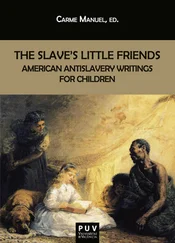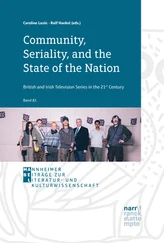Following Kress and Van Leeuwen (2001), our approach involves the four analytical strata mentioned in more detail below: discourse, design, production and distribution. As there are no major differences in relation to production and distribution, I am compelled to consider that the strata of discourse and design are more relevant when attempting to isolate the specific characteristics of a regional channel like TV3. Kress and Van Leeuwen (2001: 8) emphasize that the analysis of multimodal communication must take into account the point of view of the producers of advertising and those who interpret it.
As with other regional channels in their respective contexts (Canal 9 in Valencia, ETB in the Basque Country and Galicia TVG), article 14 of the law creating the Corporació Catalana de Ràdio i Televisió published in the Official State Bulletin 1983: 1,482 (DOGC), attributed to the medium “the promotion of Catalan language and culture” [my translation]. The third general provision embodied by the Advertising Code states:
The language to be used generally in advertising is Catalan, in accordance with Article 25.1 of the Law on Language Policy. At the request of agencies and advertisers, the broadcasting company will translate into Catalan or proof advertising texts without charge. (CCMA, 2011: 2) [my translation].
In fact, the wording of the provision leaves it to the advertiser to select the language, but the language chosen in most cases is Catalan. 10 Why is this so?
From a multimodal perspective, the seventh provision of the Advertising Code has repercussions with regard to the commercial discourse of advertising companies: “The content of the ads in relation to sound, speech, purpose and images will be the responsibility of advertisers” [my translation] (CCMA, 2011: 3). But this is where the question arises as to precisely what portion of that responsibility falls to the medium. That is, one wonders how much of the effect of advertising is conditioned by the broadcast medium. The creation of meaning necessarily implies an ideological construct. An entirely different issue is whether said ideology is integrated within a context of generally binding rules. In any case, in this respect I believe that the wording of the law is deliberately ambiguous, since it only excludes ideas “of a philosophical, political or religious nature” [my translation] (CCMA, 2011: 3), without specifying what is meant by each of these concepts. However, as Eguizábal (2007: 309) states:
… only a simplistic and anachronistic interpretation of advertising would force us to see it as a psychological mechanism that operates in the short term to affect the behaviour [...] of consumers [my translation]
It is for this reason that the language model is built with medium-and long-term communication in mind. Eguizábal (2007: 309), in a very broad sense, relates this assertion to the cultural construction of social habits and customs “of each era”.
According to Saborit (2000: 197):
the formal structure and rhetorical strategies of TV ads rely heavily on what is being advertised and, therefore, we can establish genres of television advertising, defined by their formal and rhetorical regularities.
In this regard, the codes through which ads are articulated have evolved from the more rational models of the first stage of modern advertising, to the much more emotional style of today. The evolution of an advertising model based on reason to one built on emotion (Klein, 2000) requires a profound change in narrative strategies. Advertising in Catalan is no exception.
Advertisements encourage in consumer’s the desire to identify with the object being promoted. To achieve this end, the ad attempts to convey the experience of consumption in cultural terms, but this allows us to participate in a reality which is independent from the real world (Llorca-Abad, 2011: 147). We can conclude, in other words, that Tv3 ads are no different from others beyond the actual language used, i.e. Catalan.
4
Methodology and Analysis of the Corpus
I gathered the corpus of ads which I analyze below from February to September 2012. In my selection of ads I have given priority to those which can be seen as providing uniqueness to the analysis. In other words, as mentioned in section 3, those commercials which, due to the origin of the companies or organizations featured, may be considered more Catalan although they may also be found in the rest of Spain. 11 Some of the ads that have been translated into Catalan are broadcast in other parts of Spain in Spanish.
From this point on, the factors I will take into consideration when approaching the analysis are those where we can identify the presence of a differentiated advertising model. But, before analyzing my sample of nine commercials, 12 I will make a number of clarifications based on the four layers of analysis proposed by Kress and Van Leeuwen (2001).
4.1 PRODUCTION. Being an embodiment of design (Kress and Van Leeuwen, 2001: 69), production is understood, in the field of television-advertising creation, as the moulding of the elements necessary for the construction of the commercial, and for final assembly: ideation, script writing, recording, performing, editing, voice-overs, sound, postproduction, etc. 13 The production phase, i.e., the actual creation of advertising discourse is partly responsible for its ultimate meaning, as “production and discourse are directly connected” (Kress and van Leeuwen, 2001: 73). In some cases this affects the division of campaigns into ads of various lengths ( Estrella Damm , or Catalana Occidente ) to achieve a longer term effect. The longer ads have a contextualizing function and the short ones play the role of reinforcing recall.
Although different types of production can lead to the same kind of discourse, we understand that the narratological specification of advertising allows us to speak of a stable strategy. González-Requena and Ortiz de Zárate (1995: 21) describe it thus:
What, in terms of enunciative structure, translates into a constant presence of the figure and the interpellative gestures of the advertiser directed at the audience will tend to manifest itself in all the parameters of audiovisual discourse. [my translation]
Clearly, advertising agencies, most of which are Catalan, have highly specialized production systems that are appropriate for channels of distribution of audiovisual content (television). This means that agencies work with a common narrative language and common references so they are easily identified by any viewer, regardless of their location in Spain.
4.2 DISTRIBUTION. Regarding the technology used in the distribution of commercials, my analysis will be limited to terrestrial digital television although TV3, like other Spanish television channels, can also be consumed through pay-per-view digital platforms or Internet. 14 Thus, the importance of the analysis in this respect lies in the conventional manner of watching television. Recall that this has important implications regarding one of the key elements of analysis, i.e., broadcast language. Tv3 is made in and for Catalonia, 15 that is, an area, defined both politically and territorially, in which more than 7.5 million people live. Of course, at a later date the contents can be consumed through other distribution channels throughout the world.
Television broadcasts capsules whose geographical and temporal range is decided by the brand being advertised, and the advertiser in relation to the trade agreement reached with the channel. These agreements are of different types for each specific form of distribution. In my analysis, I selected prime time as the scope and impact of ads in relation to the number of people they reach are very different. It is true that the old parameters used to gauge audience numbers are gradually becoming obsolete. However these parameters are still in force and such is their importance that they are used to decide on the cost of airing an ad.
Читать дальше











